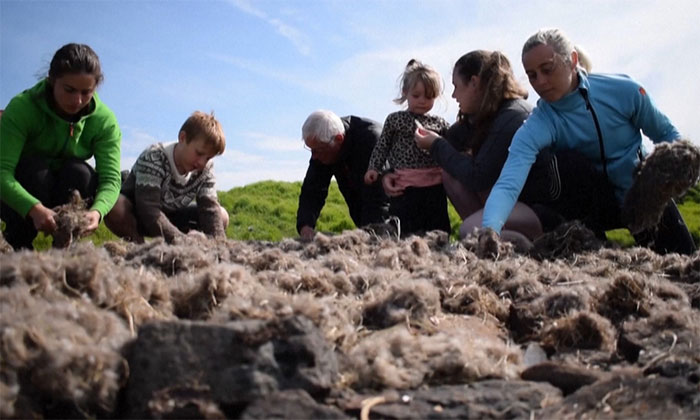The down feathers of Eider ducks breeding on Bjarneyjar Island are the warmest natural fibers in the world, sold for thousands of dollars per kilogram.
On the remote Bjarneyjar Island in Breidafjordur Bay, off the west coast of Iceland, hundreds of farmers are scouring the grasslands, caves, and sandy shores to collect the feathers of the Common Eider duck. This is the warmest natural fiber in the world, lightweight and with high thermal insulation, making it ideal for producing down quilts.
Typically, from May, Eider ducks begin to breed in the remote landscapes along the coast of Iceland, where abundant seaweed provides food for the ducklings.
The process of producing the “best down quilt in the world” from Eider duck feathers. (Video: AFP).
“When a nest has eggs, we only take a portion of the feathers that have fallen out. We collect the rest only after all the ducklings have hatched and left. After that, we proceed to dry them. This process is crucial because if the feathers are not dried immediately, they can mold and spoil,” said Erla Friðriksdóttir, owner and manager of the King Eider feather harvesting company, to AFP.
It takes about 60 nests to collect one kilogram of Eider duck feathers. On average, a down quilt requires between 0.6 to 1.6 kilograms of feathers, depending on the quality selected. Globally, the annual harvest of these feathers does not exceed 4 tons, with three-quarters coming from Iceland. The remainder is sourced from Canada and other Arctic-bordering countries.
In Bjarneyjar, the tradition of searching for duck feathers is believed to have begun in the 9th century when Vikings from Norway settled on the island, passing it down through generations.
Since 1847, Eider ducks have been protected across Iceland. Hunting and egg collection are both prohibited. However, this species still faces threats from natural predators such as gulls, crows, eagles, and stoats.
“We have noticed that the ducks increasingly prefer to nest near human settlements. This may be a strategy to ward off natural predators,” explained Jon Fridriksson, Erla’s brother.
In addition to its high quality and limited supply, the reason Eider duck feathers command a high price—up to thousands of USD per kilogram—stems from the meticulous handmade production process. After collecting and drying the feathers, the staff at King Eider begin the cleaning and sterilization phase using a giant dryer at a temperature of 120 degrees Celsius for 8 hours.

“When brought to the workshop, most of the feathers are filled with grass, eggshells, and ocean debris. We put them in the dryer to kill any organisms. The high temperature also makes the grass brittle,” said Pall Jonsson, machinery supervisor at the factory in the nearby town of Stykkisholmur.
The next step involves a machine removing some of the dirt from underneath by pressing it through a fine steel mesh. Following this, there is a thorough hand-cleaning process as no technology has yet been able to replace this manual labor. Even for the most experienced workers, it takes between 4 to 5 hours to clean one kilogram of feathers. Finally, the feathers are washed with water and sterilized before being wrung out and dried again.
A standard quilt containing 800 grams of Eider duck feathers is currently sold for about 640,000 Icelandic kronur, equivalent to 5,116 USD. Customers are often nature lovers and environmentally conscious individuals, Fridriksdottir added.




















































